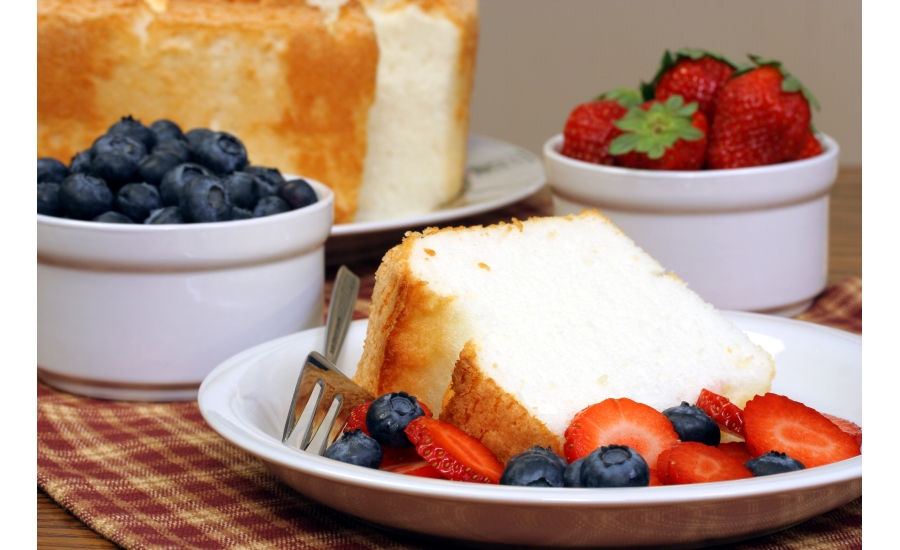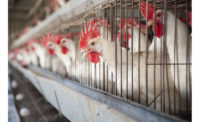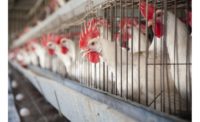The highly pathogenic avian influenza (HPAI) H5 outbreak that decimated the egg industry from December 2014 through June 2015 continues to impact supply-chain decisions related to egg product and potential substitutes, particularly in the bakery industry.
As noted in “Avian influenza 2015: an industry update,” the outbreak—the worst of its kind in U.S. history—left more than 48 million affected birds in its wake. Egg producers are busy cleaning and subsequently repopulating farms.
But this situation is far from over. Getting all affected farms back to pre-outbreak production levels could take years. And considering the possibility that the outbreak might resurface in the coming weeks as wild birds begin their fall migration south, suppliers continue to fine-tune their tactics for bakers and other members of the food industry that rely on egg products for flavor, form and functionality.
Resourceful reactions
Jonathan Spurway, vice president of marketing and optimization, Rembrandt Foods, Rembrandt, IA, notes that his company—a global egg ingredient supplier—lost more than 50 percent of its vertically integrated supply across two of its major production sites during the outbreak period.
But the company’s global footprint proved essential to responding to customer needs as the outbreak catalyzed egg product shortages across the industry. “Rembrandt has actively worked with global industry partners to find any available egg supply to help support our customers,” says Spurway. “We have currently globally sourced approximately 60 percent of our lost volume from off-line shell to be broken and processed over the next 18 months at our facilities in the U.S.”
Spurway says that the company has also sourced substantial volumes of egg products supplied globally to the Americas, Asia, Europe and the Middle East. “Although this egg carries a different cost structure, it remains competitively priced as we look to answer the need for products globally,” he says, noting that this approach will help build business continuity and customer confidence “in the case of additional outbreaks in the U.S. or further afield.”
Much of this work has been unprecedented in the egg industry. “In the last 16 weeks, we have created a new global supply chain that is operating at a scale that has never been seen before,” says Spurway.
For pure functionality, notes Spurway, it’s nearly impossible to beat the quality—and clean-label appeal—real egg products bring to food. Real eggs particularly provide benefits for baking applications, he notes, such as binding, leavening, foaming, flavor and coagulation. “It often requires addition of emulsifiers, oils, gums, polysaccharides, acids, enzymes, colorants and/or flavoring agents, in addition to the replacer, to gain the same functionality an egg can provide,” he says. “This can result in a lengthy ingredient statement, diverting from the clean label eggs can provide.”
But part of helping ensure customer success can include opting for egg-extender ingredients. “We have created egg-extension solutions to help cover shortfalls where possible,” says Spurway. The dried egg- extension product line combines real eggs with functional ingredients. “With our egg extenders, you are able to gain the same functionality as using 100 percent real eggs, while being able to extend the use of the product,” he says. “The taste, aroma and coloring of our egg extenders are typical of standard dried egg products. While maintaining functionality and product appearance, the egg extenders also offer a cost savings.”
Replacement strength
The HPAI H5 outbreak has unquestionably spurred significant interest in egg-replacement systems. “The business of egg replacers is booming,” says Kathy Sargent, manager, sweet bakery goods, Corbion Caravan, Lenexa, KS, noting that the company’s egg-replacer portfolio has seen an increase in demand, with current customers and extended to new customers and applications. “Our scientists have delivered three new products to the market,” she says, and more solutions are in development to meet customer needs.
“We have seen a significant increase in sales of our egg-replacement solutions over the last two to three months, as well as a large increase in sample requests for these solutions and technical support from our customers,” says Ricardo Rodriguez, marketing manager, confectionery and bakery, Ingredion Inc., Bridgewater, NJ.
Many suppliers that offer egg replacers were able to quickly respond to market demands. “Increased demand, and our ability to effectively meet that demand, has resulted in a substantial increase in sales volume of our specialty proteins in 2015,” says Mike Buttshaw, vice president, ingredients sales and marketing, MGP Ingredients, Atchison, KS, specifically citing the company’s wheat protein isolates and lightly hydrolyzed wheat protein.
Buttshaw also credits the industry’s generally increased appetite for protein as factoring into the sales uptick. “Part of this increase is certainly attributed to egg and egg white replacement initiatives coming to fruition,” he says. “However, our specialty protein business in general is performing nicely this year due to the overall demand for higher protein and lower calories in bakery products and snack goods.”
Rising to challenges
Sargent notes that chemically leavened batter systems have posed the greatest egg-replacement challenges. “These formulations are extremely diverse and depend on over a dozen functional properties from eggs,” she says. “Replacers must deliver emulsification, structure, resilience and foaming, just to name a few.” She notes that company scientists have developed highly functional blends to mimic these functional attributes that apply to a variety of leavening systems. “The results are outstanding, with cakes and muffins maintaining volume, resilience and the pleasant eating characteristics of the gold standards,” she says. “Bakers benefit from a consistent blend that is easy to handle and tolerant in production.” Most importantly, consumers receive the high-quality products they have grown to expect.
“Our customers are devoting much of their R&D resources to egg reduction by validating and plant qualifying before submitting final recommendations for regulatory review and their customers’ acceptance,” says Bill Gilbert, Certified Master Baker, principal food technologist, Cargill, Plymouth, MN. He notes that over the last few months, the company has mainly dedicated technical resources to assist in testing and creating specific solutions for products with a high ratio of egg products, including angel food cakes. “Cargill’s two Certified Master Bakers have devoted almost 100 percent of their time over the last three months to advising and testing our full portfolio of egg-replacement options to achieve specific customer replacement needs,” he says.
“Our largest challenge has been with angel food cakes and achieving 50 percent albumen replacement,” says Gilbert. He notes that during the ongoing HPAI H5 crisis, the company has helped customers find timely egg-product reduction solutions, avoid disruption from egg shortages, and reduce overall costs by 40 percent. “In addition to angel food cakes, we’ve had great success with 100 percent yolk replacement in cake doughnuts, 75 percent whole egg in cakes and 65 percent whole egg in cookies, just to name a few,” he says.
Many companies have struggled with solutions for replacing egg whites in angel food cake—a difficult application to work with, notes Rodriguez. “Two key challenges were understanding other ingredients in the formula and their impact, along with delivering expected replacement level,” he says. “What really helped in overcoming these obstacles was having an open discussion with the customer on their particular formula, the ingredients that they use and optimizing the formula when combining with our solution. As part of that discussion, we were able to come up with realistic replacement levels that would provide the expected quality of the finished product, along with drastic savings, which was the main goal all along.”
Buttshaw notes that MGP Ingredients can help customers replace sizeable percentages of egg whites in many formulas. “We have seen great success rates replacing 25 to 50 percent of egg whites in several applications,” he says. “In some cases, we have been successful replacing 100 percent of the egg whites.
“The larger challenge is replacing the entire egg or egg yolks due to the emulsification properties that whole eggs provide within formulations. We have experienced success in using our specialty proteins combined with whole milk to replace whole eggs or egg yolks.” Buttshaw notes that these replacement solutions “provide a lower cost compared to eggs, and will always offer lower cost alternatives, even after the supply-and-demand correlation is in a better balance.”
(For more information on application-specific solutions for extending or replacing egg products, see “Egg replacements to the rescue” and "Ingredient suppliers offer bakers egg alternatives.")
Long-term solutions
The HPAI H5 situation has caused significant second-guessing across the industry in terms of supply-chain stability. “We see our specialty proteins being used much more frequently, and we expect a much higher level of usage, even after the avian influenza crisis has subsided,” says Buttshaw. “Without a vaccine, it will always be in the back of everyone’s mind. The new formulas will certainly help in decreasing reliance on eggs and securing a more-predictable future for bakers and snack food producers.”
Beyond backing the significant efforts that have gone into replacing egg products, matching quality and texture rubrics, and the cost savings, Rodriguez points to the allergen aspect of the equation. By completely removing eggs from a formula, he notes, manufacturers have eliminated a primary food allergen from the label.
The investment in egg-replacement R&D might justify maintaining the new formulas after the egg product market returns to normal. “Our customers are telling us that after the crisis is over and prices stabilize, they will continue with their replacement solutions,” says Gilbert. “The hard work has been done to change labels and reformulate. Overall, the replacement solutions provide cost savings to our customers throughout the ups and downs of egg pricing.”
Pricing for egg ingredients can sometimes resemble a rollercoaster ride. Gilbert notes that last year, albumen prices spiked from $6.50 to $17. per pound. But before customers could validate and qualify a solution offered by the company, the price came back to $8, “so R&D resources were diverted back to other projects, even though our solution still had a cost-savings benefit. However, with the recent price reaching upward of $20 per pound, we have many customers who have now reformulated to avoid future volatility.” He notes that customers have been developing new products with reduced levels of egg products to avoid potential pricing risks.
“The market for egg products has a history of instability,” says Sargent. “The risk of future outbreaks of avian Influenza, and new regulations to protect the poultry market, are likely. These factors indicate the likelihood of egg prices remaining elevated from past market prices and lacking stability.”
But egg suppliers keenly understand these market fluctuations, and often take steps to help manufacturers minimize pricing risks. “We continue to offer grain-based pricing solutions that enable the customer to remove themselves from the direct influences of the market and manage their commodity risk over time,” says Spurway.
In the end, product developers must balance big-picture supply-chain issues with other aspects like ideal product quality, eating characteristics, consumer expectations, desired ingredient statement parameters and more. And every ingredient and formulation tactic plays into the degree of potential product success.





